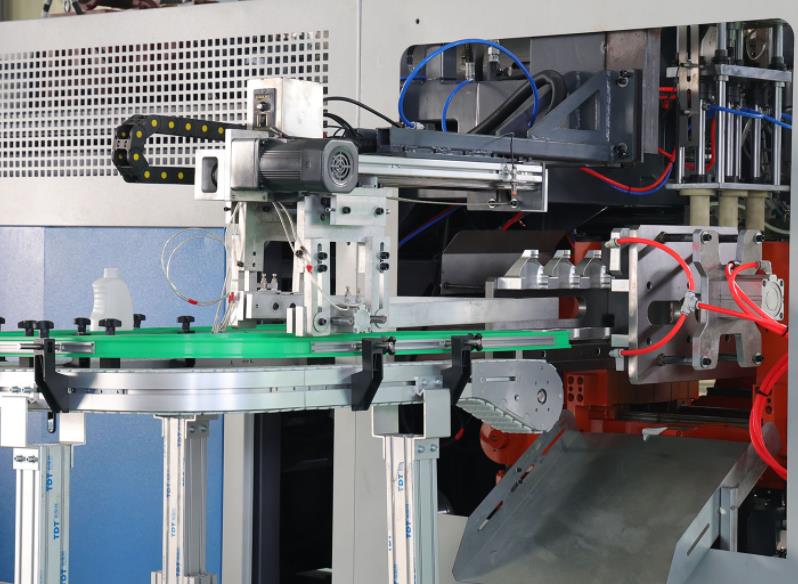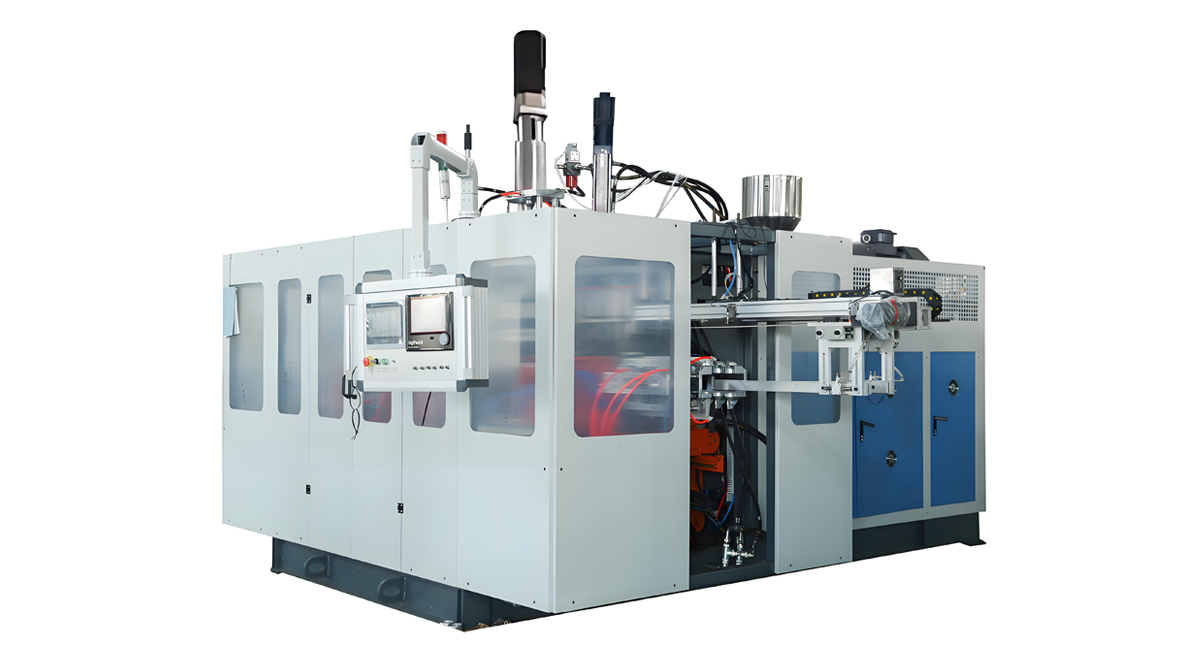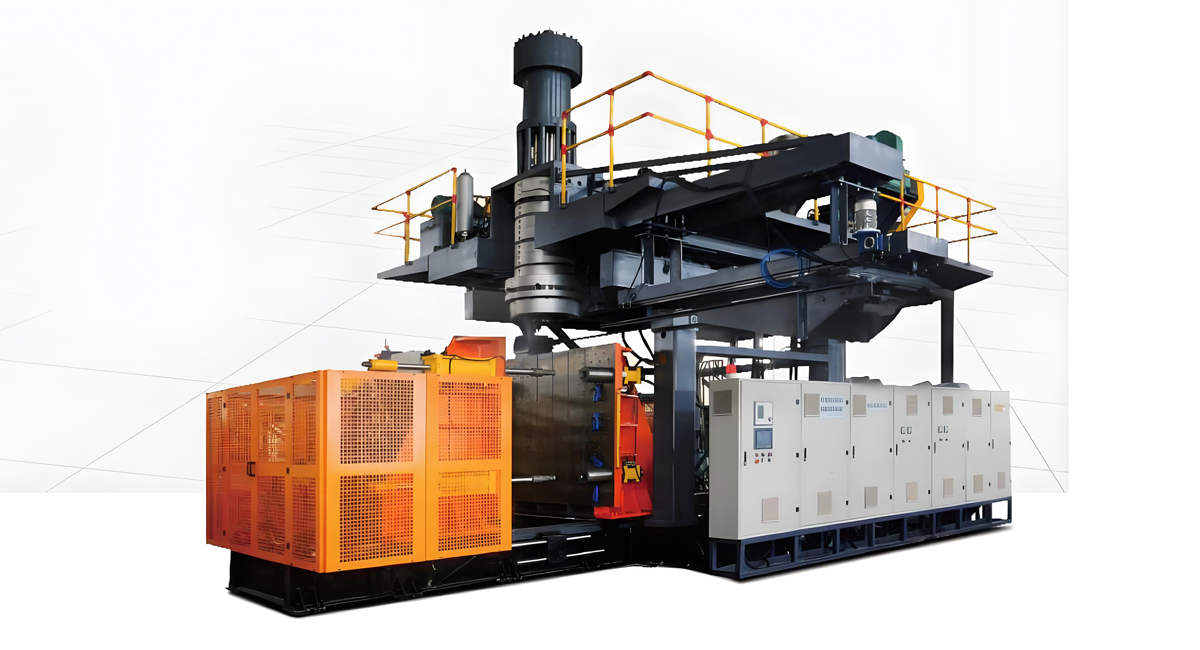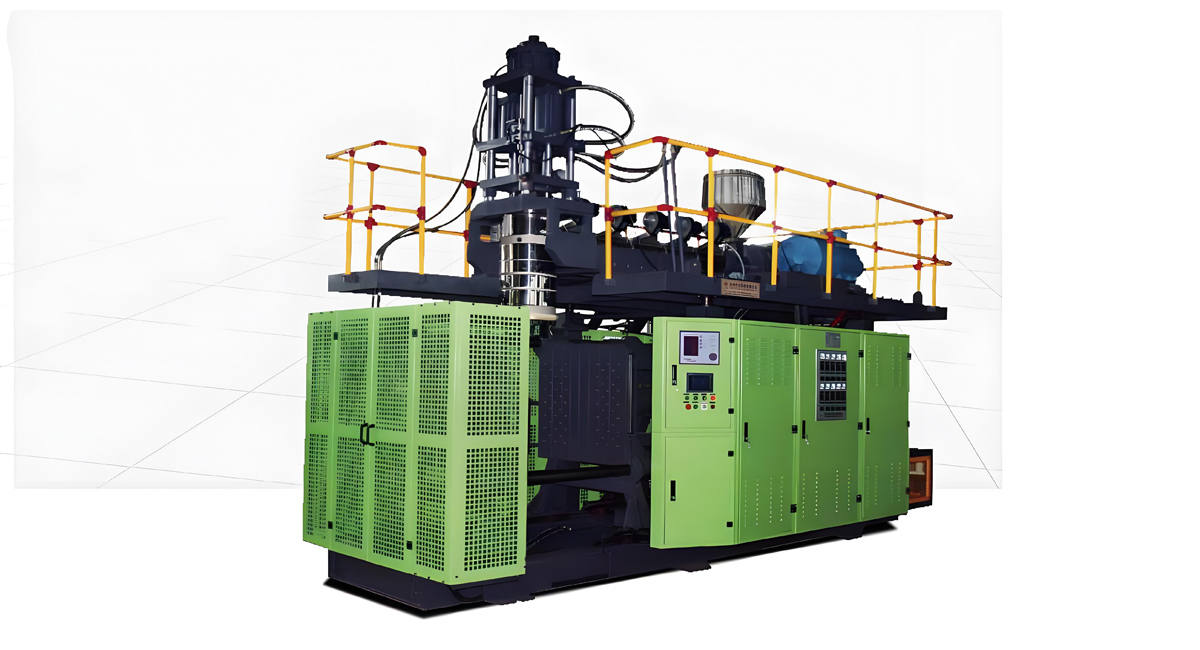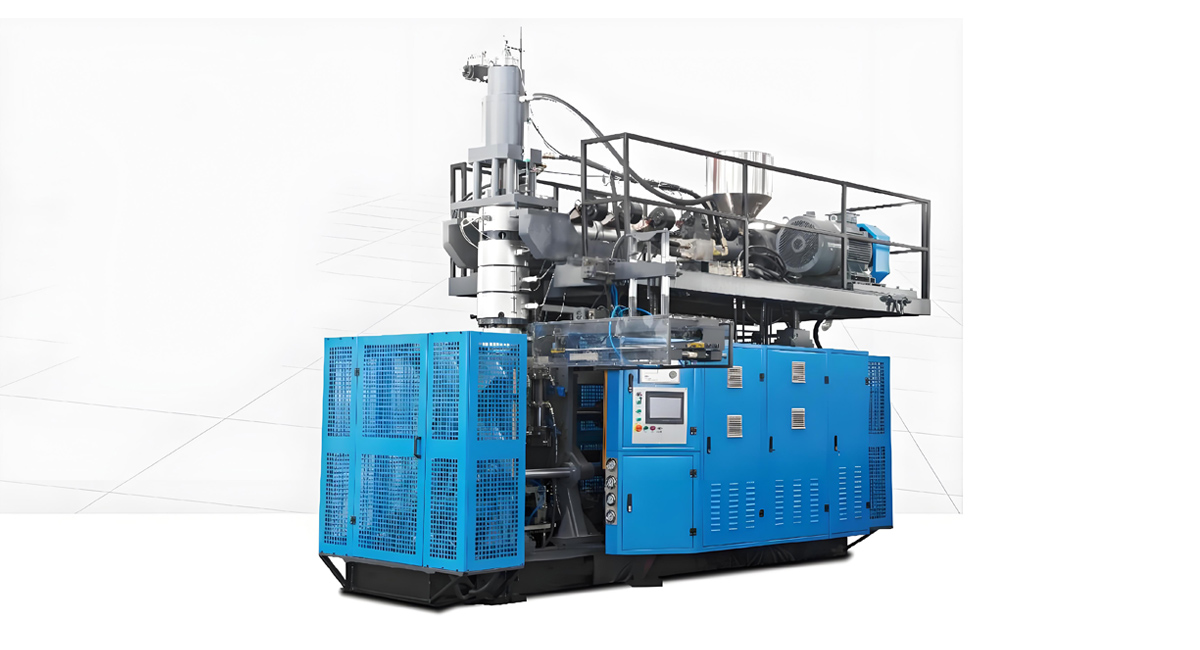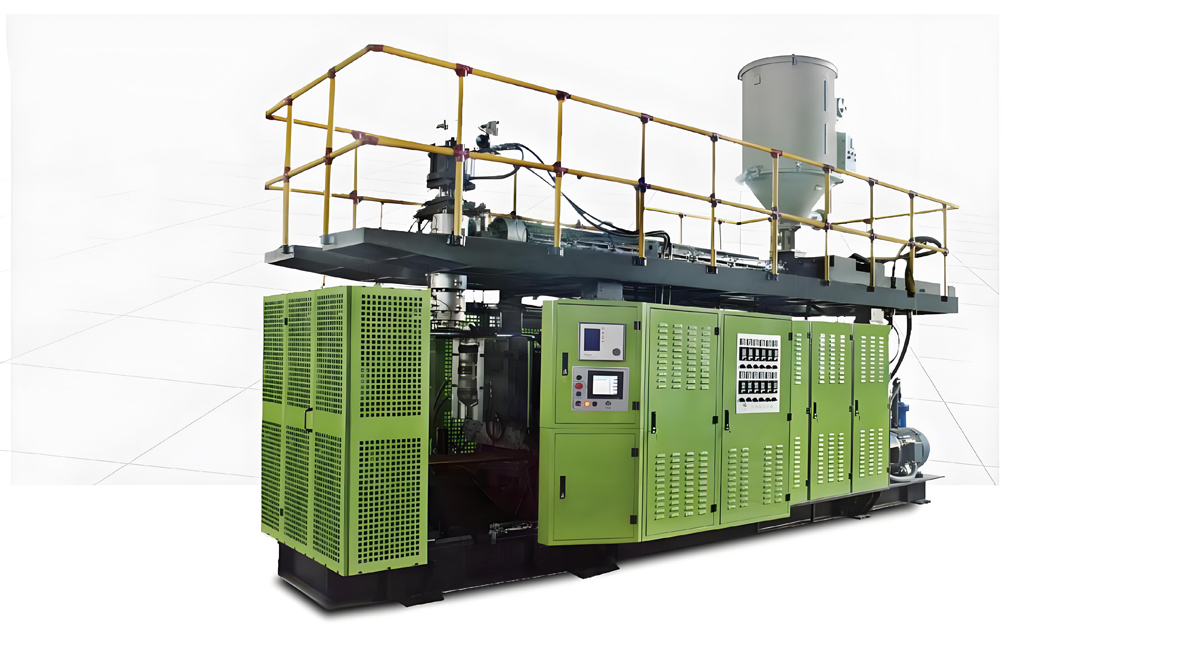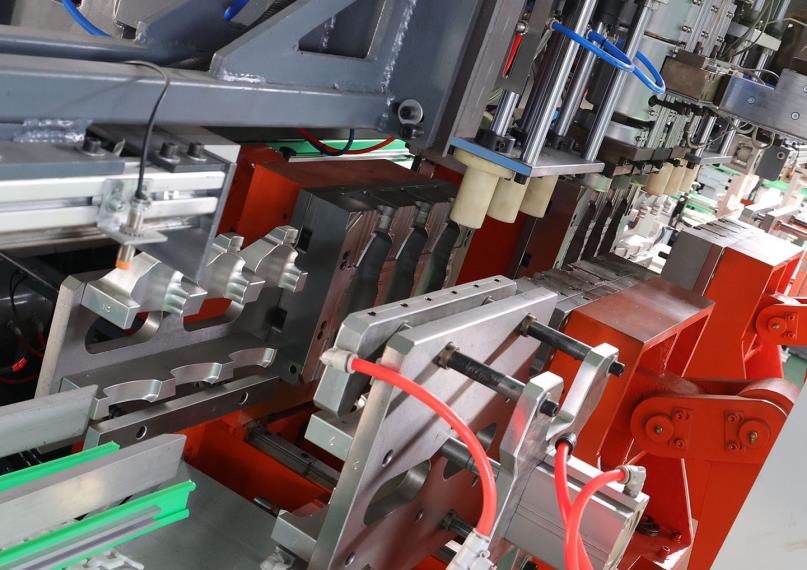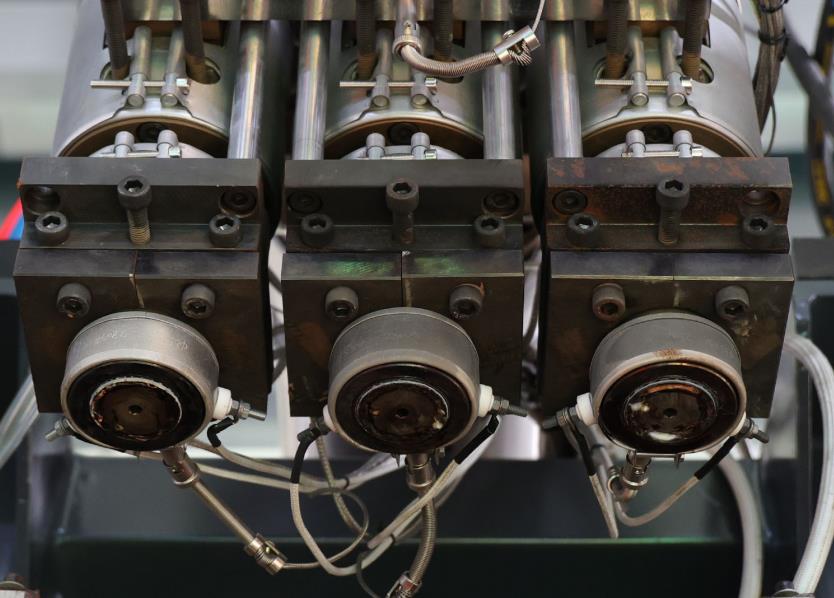The working principle of an extrusion blow molding machine is to spray liquid plastic out, and then use the wind force blown out by the machine to attach the plastic body to a certain shape of the mold cavity, thereby producing a product. Here is its detailed working principle:
Plastic melting and extrusion:
Plastic raw materials are added to the hopper of the screw extruder.
The screw rotates inside the extruder, pushing the plastic forward and heating it to melt.
The melted plastic is quantitatively extruded through a die to form a tubular plastic preform.
Forming and cooling of preforms:
After the extruded tubular plastic preform is heated or softened, it is placed in a split mold.
After the mold is closed, compressed air is immediately introduced into the billet to inflate and tightly adhere the plastic billet to the inner wall of the mold.
At the same time, the wind ring blows air to cool the billet and gradually solidify it.
Demoulding and winding:
After cooling, the plastic product is shaped in the mold and then removed from the mold.
The demolded plastic products may be pulled by a traction machine at a certain speed and wound into rolls by a winding machine for subsequent processing and storage.
In addition, the automatic air ring structure of the extrusion blow molding machine plays an important role in controlling the thickness of the film. The automatic air ring adopts a dual air outlet method, where the air volume at the lower air outlet remains constant, and the circumference of the upper air outlet is divided into several air ducts. Each air duct is composed of an air chamber, valves, motors, etc. The motor drives the valve to adjust the opening of the air duct, thereby controlling the air volume of each air duct. During the control process, the thickness probe detects the thickness signal of the thin film and transmits it to the computer. The computer compares the thickness signal with the currently set average thickness, performs calculations based on the thickness deviation and curve trend, and then controls the motor to drive the valve to move and adjust the size of the air outlet to change the cooling effect of the film blank at the die discharge point, thereby accurately controlling the thickness of the film.
Overall, the working principle of an extrusion blow molding machine is a complex and intricate process involving multiple steps such as melting, extrusion, molding, cooling, and demolding of plastics. By precisely controlling various parameters and steps, plastic products of various shapes and specifications can be produced.
The workflow of an extrusion blow molding machine mainly includes the following steps:
Preparation and melting of plastic raw materials:
Add thermoplastic resin or other plastic materials into the hopper of the extruder.
The screw of the extruder rotates to transport, compress, melt, and plasticize plastic raw materials.
The melted plastic is passed through the head of an extruder to form a tubular billet.
Molding extrusion and length control:
Melted plastic is extruded from the tubular die of the machine head to form a continuous tubular billet.
By controlling the speed of the extruder and the size of the head, the thickness and diameter of the billet can be adjusted.
When the billet reaches the predetermined length, the extruder will stop extruding or cutting in order to proceed to the next step.
Mold closure and billet clamping:
The mold is moved to the bottom of the machine head and closed to clamp the billet.
The closing force of the mold cuts the billet and clamps it between the two halves of the mold.
The design of the mold determines the shape and size of the final product.
Blowing and Forming:
Inject compressed air into the mold blank through the blowing tube head on the parting surface of the mold.
Use the pressure of compressed air to inflate and tightly adhere the billet to the inner wall of the mold.
During the inflation process, it is necessary to control the pressure and flow rate of compressed air to ensure that the billet can expand uniformly and fully.
Cooling and shaping:
After inflation molding, it is necessary to cool the product to shape it.
Cooling can be achieved through cooling channels inside the mold or external air cooling devices.
The cooling time depends on the thickness, material, and desired shaping effect of the product.
Demoulding and removal:
After the product has cooled and solidified, the mold is opened and the product is removed.
The product may require certain post-processing, such as trimming edges, removing burrs, etc.
Quality inspection and recycling:
Conduct quality inspections on the produced products to ensure they meet specifications and requirements.
Unqualified products need to be recycled and processed to reduce waste and environmental pollution.
Circular production:
After completing a production cycle, the extruder blow molding machine automatically or manually returns to its initial position, ready for the next production cycle.
Through continuous production processes, efficient and large-scale production of plastic products can be achieved.
It should be noted that in the actual production process, the workflow of the extrusion blow molding machine may vary depending on different equipment models, production requirements, and raw materials. Therefore, adjustments and optimizations need to be made according to specific circumstances during operation.


